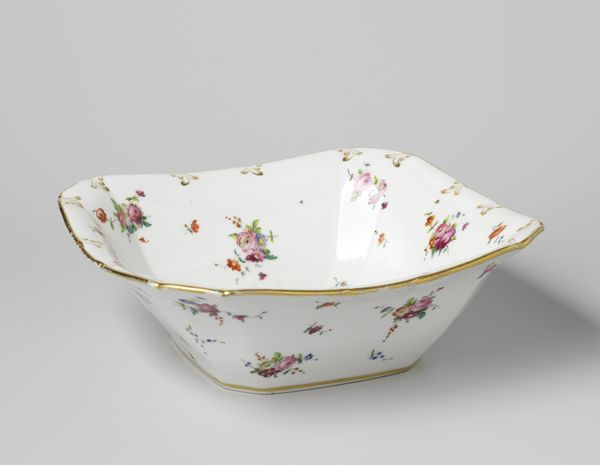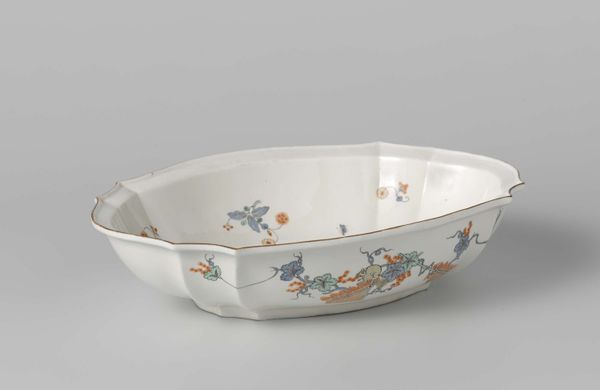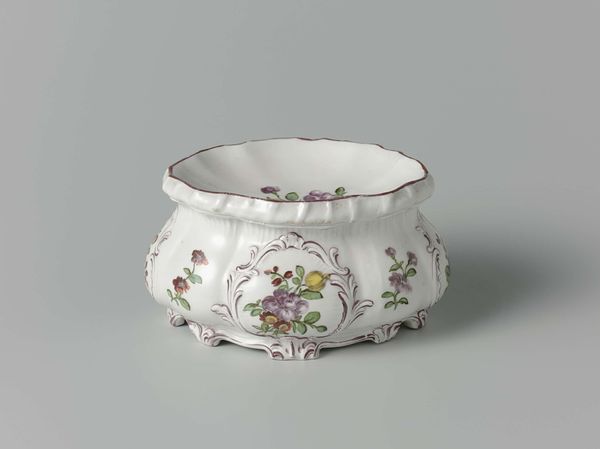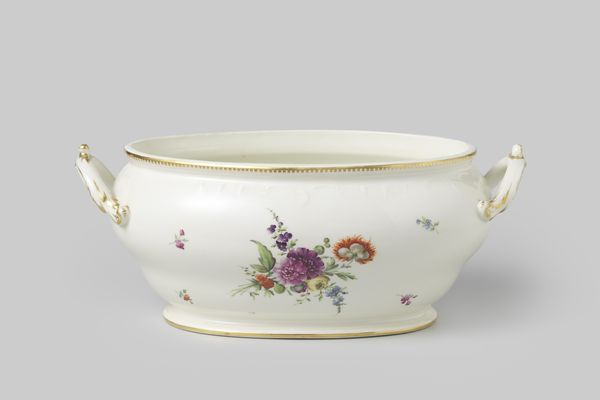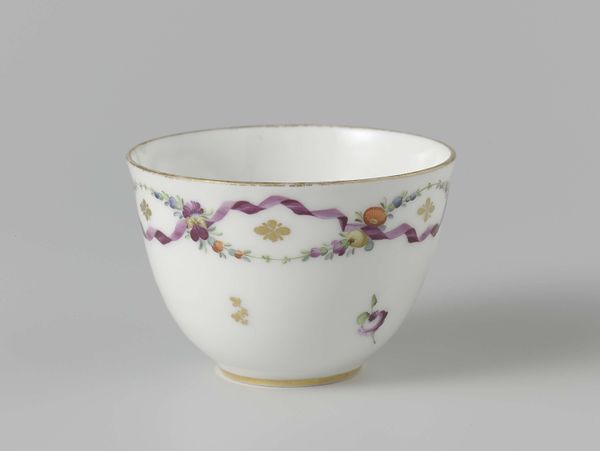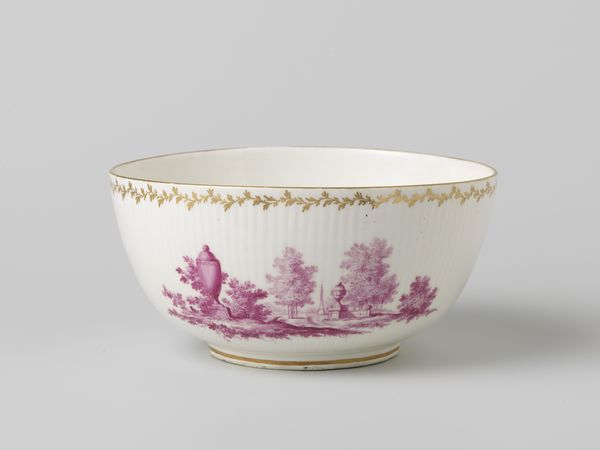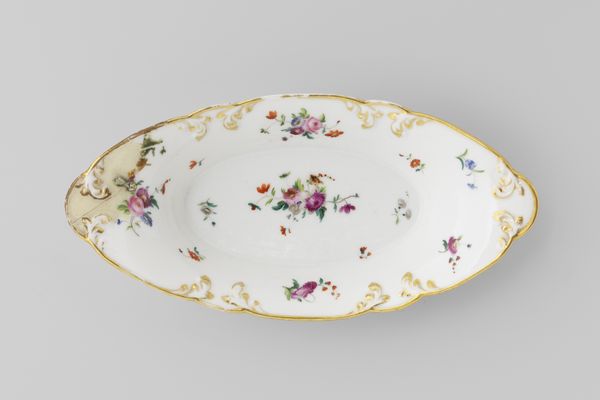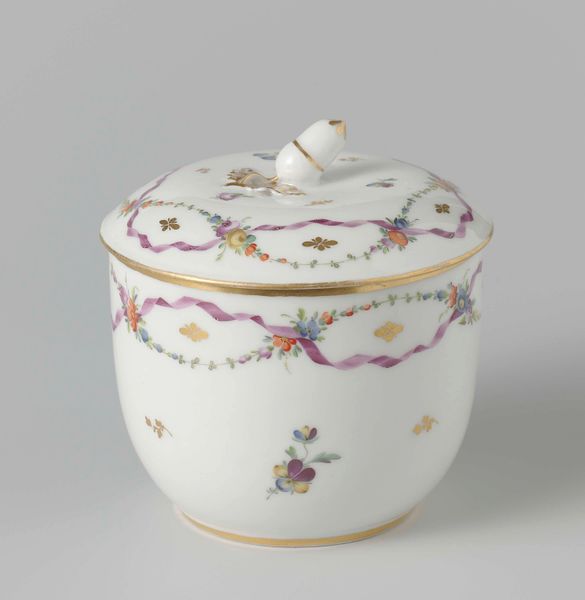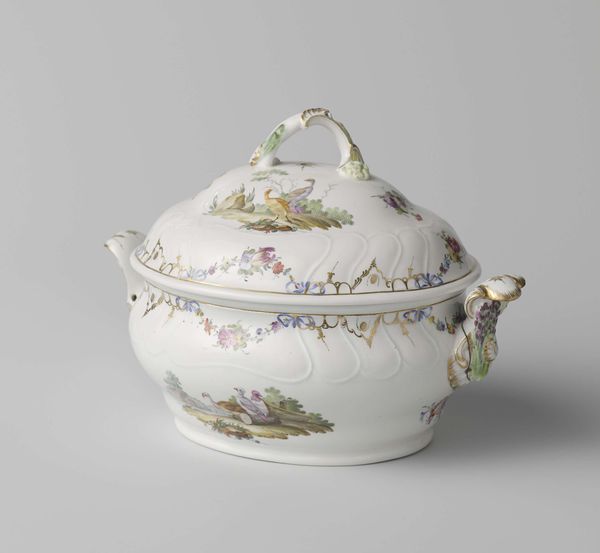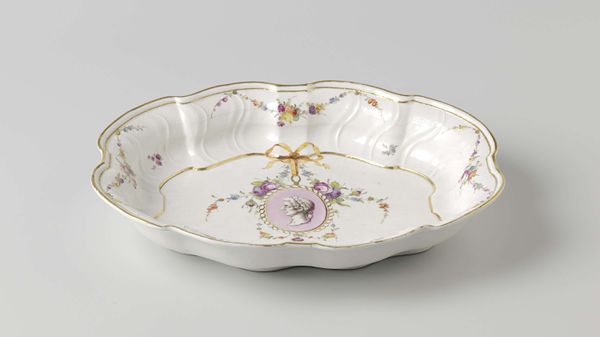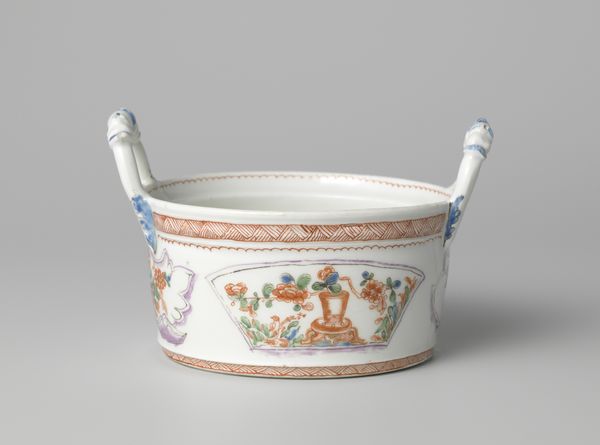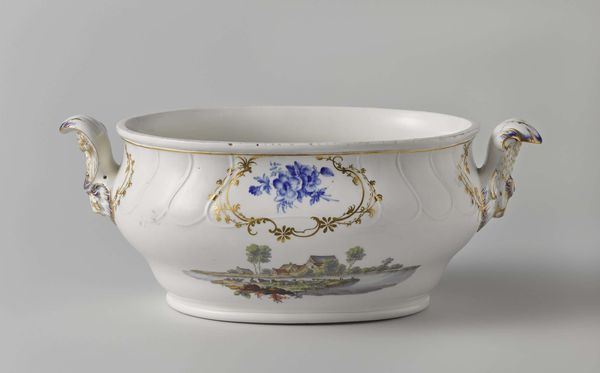
Dimensions: height 7.2 cm, width 21.1 cm, depth 21.8 cm
Copyright: Rijks Museum: Open Domain
This slakom, or serving bowl, was made in Loosdrecht, most likely in the late 18th century, using porcelain and paint. Porcelain is a refined type of ceramic, known for its smooth, translucent qualities. The process begins with shaping the clay, often using a mould for uniformity. This particular piece is decorated with delicate floral motifs, painted by hand. The quality and design of the slakom speak to a specific social context. Porcelain production was a luxury industry, reliant on specialized skills. The act of painting each flower required precision and artistry. Note also the labor involved in mining and processing the raw materials, refining the clay, firing the porcelain, and then hand-painting the decoration. By appreciating the material and processes, we recognize that the slakom is more than just a pretty object. It's an outcome of collective work and cultural ambition, blurring the boundaries between craft, industry, and art.
Comments
No comments
Be the first to comment and join the conversation on the ultimate creative platform.
